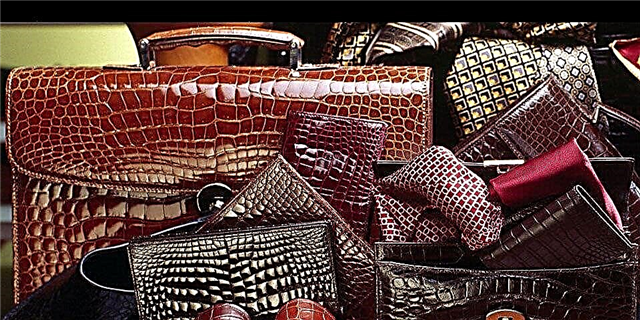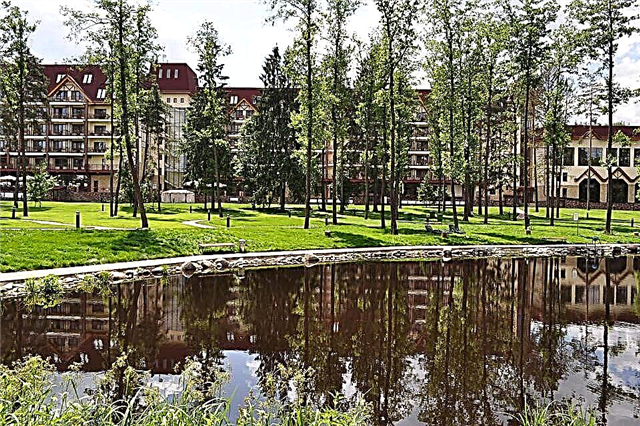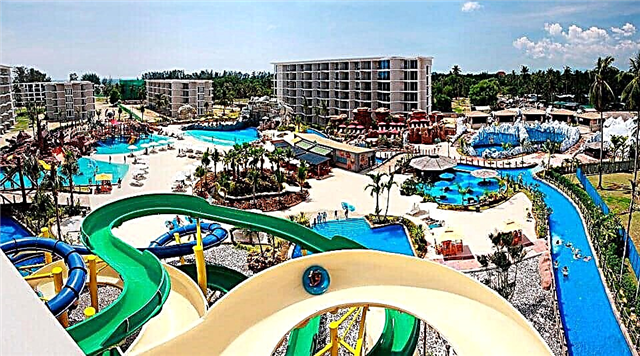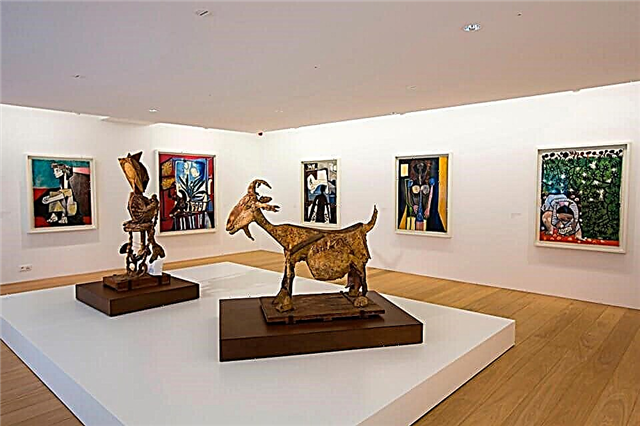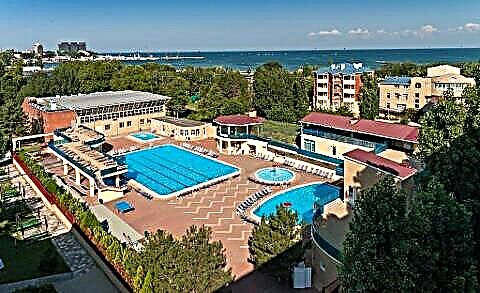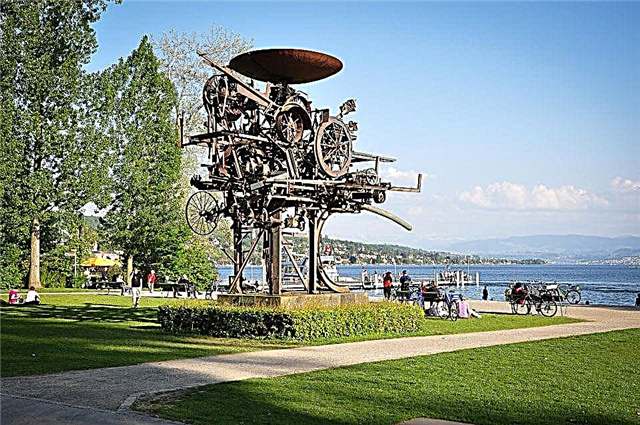Zurich belongs to the German-speaking part of the Swiss Confederation. The city is located in the foothills of the Alps, on the shores of the lake of the same name. The settlement has a long history, its name is recorded in the chronicles of 929. Today, it is the largest city in terms of population in the country. It is known primarily as a banking and financial center. At the same time, many city objects have earned a reputation as historical and architectural monuments. Tourists from different parts of the country and from abroad willingly visit the sights of Zurich.
Kunsthaus Museum

The Kunsthaus is a must-see for art lovers. The museum is one of the largest in the whole of Switzerland. Here are the works of great masters of different eras, from the 15th century to our time. The Kunsthaus has collected works by artists such as Salvador Dali, Pabl Picasso, Claude Monet, Marc Chagall and many others.
In addition to paintings, the museum contains photographs, videos, prints, graphics, sculptures and art objects. The Kunsthaus building also houses a library, the main books of which are devoted to art. There is a souvenir shop on site. In addition to the main expositions, the museum hosts thematic evenings, musical meetings and seminars. The Kunsthaus is located near Belleveu Square. You can get to it by bus number 31 or trams number 3, 8, 9 to the stop "Kunsthaus". The doors of the museum are open on Tuesdays, Fridays and Sundays from 10 am to 6 pm. On Wednesday and Thursday, the establishment continues to work until 20:00. Monday is a day off.
Zoo

This zoo is one of the best in Europe. It is located within the city, in a beautiful scenic area. The zoo is surrounded by greenery, and the animals live in excellent conditions. The entire territory is divided into zones for the convenience of visitors. It has its own separate elephant park and jungle "Masoala". And in the special children's park "Zoolino" you can see pets. Aquatic inhabitants are presented separately. They can be seen up close through huge glasses.
During the day in the zoo, you can watch the feeding of its inhabitants. And in winter, admire the "Penguin Parade". It is very touching and educational. The territory of the zoo is clean and comfortable. There are special signs installed on it so that people are guided where to go. The design of the park and the construction of the fences are top notch. Children are interested and comfortable here. You can have a bite to eat in between watching animals in small fast food cafes located on the territory.
You can get to the zoo by tram no. 5 and 6 or buses no. 39, 751. The animal park is open all year round from 9 am to 6 pm. In the colder months from November to February, the visit time is up to 5 pm.
Urania Observatory

Urania is one of the most interesting places. The observatory has been operating in the city for over 100 years. It is located near the center, on the banks of the Limmat River. Here you can see celestial bodies, satellites and planets at arm's length. Visitors to Urania also love to use telescopes for stunning views of the surrounding area. In particular, the Swiss Alps. The observatory is closed in bad weather and cloudy days.
But on good, clear days, you can safely purchase a ticket to "travel through the Universe." Urania works on Thursday, Friday and Saturday. The excursions start at 20 o'clock. Duration approximately 1 hour 30 minutes.
A visit to Urania will be interesting for children who are interested in astronomy. Children under 10 years old can be brought to special programs that are organized here. On regular excursions, they will be bored. You can get to the observatory by tram number 7, 11, 13.
Rhine Falls

The Rhine Falls ranks first among the country's water attractions. The water stream, 23 meters high and 150 meters wide, is widely known throughout the world. An endless stream of tourists from different countries is sent here. Therefore, the infrastructure near the attraction is very well developed. The waterfall appeared about 14-17 years ago. The rocks surrounding it are a trace of the destruction of the river bank. The memorial site is located on the Rhine River, surrounded by a sea of greenery and endless blue skies. The waterfall is called the first in Europe in terms of the amount of water it throws down.
A noisy landmark can be heard from afar by the sound of falling water. To admire this miracle up close, you can swim up to the waterfall on a special boat. He will take you to the cliff, where a hiking trail climbs to the top of the waterfall. From afar, you can enjoy the scenery from several viewing platforms. Next to the memorial is Laufen Castle, which houses a museum dedicated to the Rhine Falls. If you want to see an inimitable show on the water, you should definitely visit the attraction on July 31st. On this day of the national holiday, a colorful show with fireworks takes place over the waterfall.
You can get here by rail from Neuhausen to Laufen castle, by train number 33. Or by suburban train number 12 or 16 to the city of Schaffhausen. And from there to Neuhausen by train.
Every 10 minutes a boat leaves from the north bank of the Rhine to the Rhine Falls.
Cathedral grossmünster

In the very center is its main shrine - Grossmünster. The cathedral is considered one of the main attractions. The majestic building was erected here in the 12th century. Although the construction began at 9. The temple was laid on the spot where the graves of Saints Felix and Regula were found.
Grossmünster is always visited by a large flow of tourists. People go to see the beautiful temple and appreciate its architecture. But many also go here for the unique views that open up around. From the top of the church tower you can see the beautiful Lake Zurich and the streets of the old town. Lovers of organ music can enjoy concerts that take place here every Wednesday at 18.30.
To see all these beauties to the top of the towers that frame the cathedral, you need to climb the stairs. There is no elevator here, so such an excursion may seem tiresome and difficult for the elderly and young children. The doors of the cathedral are open to visitors from 10 to 18 hours all days except Tuesday. In winter, the church closes an hour earlier. A tour of the cathedral will cost about 8 euros. The temple towers can be visited from 10 am to 5 pm from Monday to Saturday. Sunday - from 12.30 to 17.30 hours. In winter, it closes an hour earlier. You can get to Grossmünster by tram 4 or 15 to the Rathaus stop.
Swiss National Museum

This is one of the most interesting and beautiful places in the city. Located in a medieval castle right in the center. The building is old and very interesting. Here you will be told everything about the history of Switzerland from the very beginning to the present day. The museum displays unique items and artifacts from the Stone Age. Household items, dishes, old clothes worn by the knights - all this excites the mind and causes a storm of emotions.
The individual collections of shoes and outfits are very carefully selected. Here you can also see Swiss money from different eras and Swiss furniture. A rather interesting exhibit is the cells of a Swiss bank. In the museum, you will be transported to the 14th century and feel the spirit of old Switzerland. The interior of the castle-museum is very impressive. High vaults, molded columns and a large staircase will not leave anyone indifferent. Each exhibit has a plaque in English, French and German.
If you own one, you won't need headphones. Taking pictures in the institution is prohibited. The museum is located next to the train station.You can visit it on Tuesday, Wednesday, Friday and Saturday from 10 am to 5 pm. On Thursday, the doors of the establishment are open until 19:00. Monday is a day off. You can get there by trams # 4, 11, 13, or by bus # 46.
Langstrasse

Langstrasse is the most criminal area. It holds the palm among the city's crime throughout its existence. Even the Langstrasse Plus program failed to restore order in the area. But on the other hand, she ennobled him. During the program, new-fashioned boutiques and galleries were opened. It has become a little cozier and more beautiful here, but not at all safer.
Langstrasse is the center of cheap eateries, brothels and drug hangouts. Here you can meet people sitting right on the asphalt in the middle of the street and drinking alcohol. Beggars, informals, prostitutes and drug addicts are quite normal here. There are a dozen mini-strip bars on each street, and porn and sex toys are openly sold in stalls. This area is most loved by photographers who depict “real street life” or the fate of immigrants in their work. There are quite a lot of newcomers here, almost 50% of the population. If you have a desire to visit Langstrasse, it is best to do it during the day. It is better not to get into this area at night, especially for inexperienced tourists.
The Langstrassenfest music festival is held every 2 years. It takes two days off. All this time, the streets of the district are singing, playing, having fun and eating and drinking at tables located right in the middle of the streets. Longstreet Carnival alternates with Langstrassenfest. This holiday was created by immigrants for their own. And the most famous festival held in the area is the Caliente Latin Festival. You can get there by tram 8 to the “Helvetiaplatz” stop.
Toy Museum

If you have small children or you are a child at heart, then you should definitely visit the Toy Museum. It is located in a beautiful 5-storey building that resembles an old mansion and is called Fortunagasse. On 2 of them you can see a huge exhibition of European toys of the 18-20th centuries. This is a museum not only of toys, but also of history.
After all, it shows how toys have changed over the course of 2 centuries. Here you can see the very first toy locomotives, cars, old dolls in clothes of incredible beauty. The exhibitions in the institution are divided by themes and chronology. German dolls, which are exhibited in fashionable clothes with dogs, cars and their houses, cause great delight. The museum also displays the world's first Barbie dolls. Boys and men alike will appreciate the collection of tin and wooden toy soldiers.
They are presented with weapons, horses and even elephants. An exhibition of teddy bears and an incredibly beautiful railway will not leave anyone indifferent. The museum has a special corner where children, tired of studying the exhibits, can play with special toys. This institution gives a chance to return a little to childhood. There is a shop with souvenirs and gifts.
You can get to the museum by trams 6, 7, 11 and 13 to the Rennweg stop. Opening hours from Monday to Friday from 14 to 17 hours. Saturday from 13:00 to 16:00. Sunday is a day off.
Collection of the Emil Bührle Foundation

The well-to-do industrialist Emil Bührle collected a collection all his life. The main theme of all its exhibits is the development of contemporary art over the years. Here you can see unique paintings in various genres and old wooden sculptures. After the death of the collector, they founded a foundation named after him, and for the first time showed the collection of masterpieces to the general public. The Burle Museum was opened in a house next to his family's home.
If you are an art connoisseur, you should definitely see the collection of the Bührle Foundation. The museum is considered one of the largest private museums in Switzerland. Here you can see works by Picasso, Rembrandt, Rubens, Goya, Van Gogh, Chagall, Modigliani. In 2008, thieves entered the institution, 4 very expensive paintings were stolen. You can get to the museum by tram 2 or 4, as well as by buses No. 33, 912, 910 to the Bahnhof Tiefenbrunnen stop. The doors of the institution are open to visitors only 3 hours a day. These are precautions after a robbery. You can visit the museum from 2 pm to 5 pm on Tuesday, Wednesday, Friday and Sunday.
Fraumünster

The majestic building with a bright blue spire atop a tall clock tower is one of the world's most famous cathedrals. Fraumünster is the main rival of the equally popular Grossmünster temple. For many years they have been trying to prove their superiority, thereby earning the name of the main cathedral. Fraumünster was founded in the 9th century and was part of a convent.
But later the cathedral was destroyed almost completely. Only in 1960 the temple was finally reconstructed. Outwardly, Fraumünster is a huge, but rather dull, gray building. Above it, a tower with a clock and a spire rises in bright green color. The inside of the cathedral is very beautiful and interesting. Here you can see the largest organ, consisting of 5.5 thousand pipes. Fraumünster often conducts symphony or chamber orchestra concerts with the participation of his church choir.
The main attraction of the cathedral is the chic stained glass windows by Marc Chagall. During the restoration of the museum, the artist was 83 years old, but he did all the work personally. Five 10-meter windows are painted with stories from the Bible. Each has its own name. After 8 years, the 91-year-old artist painted another round window, adding his 6 stained glass window.
You can get to Fraumünster by trams 2, 7, 9, 11, 13 to the “Paradeplatz” stop. You can visit the cathedral from Monday to Saturday from 10 am to 6 pm (in winter until 4 pm). On Sunday - from 11 am to 6 pm (in winter until 4 pm). Admission is free, but photography is prohibited.
St. Peter's Church

The high peak of the tower of St. Peter's Church can be seen from many points of the city. This serves as a guide for tourists and the residents of the city themselves. St. Peter's Church is located in the pedestrian zone. It is always full of people near it: tourists and pilgrims come here from all over the world.
The church is quite simple, but very beautiful and cozy. The walls and ceilings are decorated with stucco moldings. Low vaults are supported by austere columns. Light creeps in through the round and oval windows, filling the temple with life. Here you can pray or just enjoy the peace and quiet.
The clock tower of St. Peter's Church is the largest in the Old World. They are listed in the Guinness Book of Records. Their diameter is 10 meters and the minute hand is 4 meters long. A stunning view opens up from the tower. You can admire them from the observation deck. Guided tours of the tower are available by appointment. You can get to St. Peter's Church by trams 4 and 15 to the Rathaus or Helmhaus stops. The temple is open from 8 to 18 hours on Monday-Friday, from 10 to 16 hours on Saturday, from 11 to 17 hours on Sunday.
Funicular Polyban

Polyban is the oldest and most famous funicular. It was launched back in 1889, to the great joy of local residents, especially students. The Polibana terminal station is located next to the university building. The funicular is used not only as an attraction, but also as a vehicle. In the 50s, Polyban was on the verge of closing. This is where the United Swiss Bank intervened. He allocated money for the continuation of the funicular and called it by his own name, which the vehicle still bears. In 1996, the Polyban was completely updated and automated. But the look of the old trailer was left to everyone's favorite.
The funicular line consists of only 2 upper and lower stops. The first is the university and the second is the Limmat waterfront. The distance between the stops is 175 meters. This is very little, however, the slope of the hill, which Polyban drives into, reaches 23%, and its height is more than 40 meters. A ticket for the funicular costs about 1 euro.You can ride it from Monday to Friday from 06.45 to 19.15 hours. On Saturday, Polyban is open from 07.30 to 14 hours. Sunday is a day off. You can get to it by tram number 3, 4, 6, 7 or by bus number 31, 33, 34, 46 to the stop "Central".
Old city

The historic city center occupies a plot of approx. 2 sq. Km. Its perimeter is limited by Banhofstrasse and the Limmat river. The first buildings on the territory of the Old City appeared during the rule of the Romans. Remains of ancient Roman baths are on display in a glass atrium. In the Middle Ages, a castle stood in the center of the settlement. The city was upset around him. Nowadays, tourists look with interest at ancient religious buildings - the Great Cathedral, the Temple of the Virgin, the Church of St. Peter.
Along the streets, buildings of the 10th century have survived, which previously bore proper names instead of numbers. Travelers can purchase souvenirs from numerous shops and antique shops.
According to the official division, the Old Town is divided into 4 main parts: the Town Hall (Rathaus), the University (Hochschulen), the City (City), and Lindenhof.
Paradeplatz square

The central position on the main thoroughfare, Bahnhofstrasse, is occupied by Parade Square (Paradeplatz). It is regularly used for public events: concerts, fairs, exhibitions. The annual Guild Parade starts from the parade ground. Boutiques, luxury hotels, cafes, pastry shops and other popular establishments are located along the perimeter of the square.
The key site is St. Peter's Cathedral. The clock on its tower has the largest dial in Europe. In the immediate vicinity of Paradeplatz, there is a Toy Museum, where children and adults enjoy their time. Many buildings have survived from the Middle Ages. The time of construction is indicated on the facades.
Many transport routes converge on the square. The final stop of the city tram is in operation. The square is just a stone's throw from Lake Zurich.
Bürkliplatz square

Until the end of the 19th century. the site on the shores of Lake Zurich was occupied by the walls of city fortifications. In the 80s. in their place, a square was formed, named in honor of the engineer A. Bruckli. Bürkliplatz square is interesting at any time of the year. The observation deck offers a magnificent panorama of the lake against the backdrop of the Alpine mountains. In the warm season, pleasure boats and excursion boats leave from the pier to sail across the reservoir. The square often becomes the venue for sports events.
Visitors' attention is attracted by an unusual flower clock with a white-green flowerbed dial. For more than 100 years (since 1910) the "Geyser" fountain has been the decoration of the parade ground. It was built according to the sketches of the architect J. Brühlmann. An artificial reservoir surrounds the figure of Theseus holding the bull. Twice a week, the parade ground is occupied by the stalls, where local farmers sell their agricultural products. During the summer months, on Saturdays, Bürkliplatz turns into a flea market. On it you can find and purchase interesting antiques.
Bahnhofstrasse

The history of the most famous Swiss street dates back to the 60s. 19th century The highway was built on the site of the former city fortifications and a water ditch. The street was originally named "The Moat with Frogs". Later, it acquired its current name - Vokzalnaya, since the route abuts against the building of the Central Station. The total length of the track line is 1.4 km.
The movement of transport, with the exception of the tram, is limited. The street has been converted into a pedestrian zone. Shops, restaurants, hotels, banks are located along the sidewalks. Bahnhofstrasse is one of the three most expensive shopping centers in the world. It attracts shoppers and connoisseurs of expensive cult brands. The architectural ensemble of Vokzalnaya Street mainly consists of buildings dating back to the 19th and 20th centuries.
Fluntern cemetery

On the slope of the mountain, between the city and the forest, there is the Flunterns cemetery. It has become the last refuge of many famous personalities. Among them are the Nobel Prize winners in literature (E. Canetti) and chemistry (P. Carrer and L. Ruzicka), doctors (E. Abdergalden and L. Sondi), cinematographer (E. Ginsberg), political and statesman (A. Meyer). The necropolis became famous after the funeral of the writer from Ireland D. Jones on its territory. The writer became famous for his novel "Ullis". It is considered an iconic work in the style of modernism.
Along with individual burials in the cemetery, there are common graves. There is a columbarium for storing ashes after cremation. Tourists visit cemeteries to see the burial sites of prominent personalities, as well as interesting gravestones and sculptural images. Flountern's area is over 33 sq. M. A chapel with a capacity of 100 people was built to carry out religious rites. A separate pavilion is intended for the recreation of visitors.
Opera theatre

The city's opera house is a true temple of art. The building for vocal performances was erected in 1891. The famous German composer R. Wagner was among the active initiators of the construction of the theater. Until the 20s of the 20th century. not only operatic performances, but also dramatic performances were shown on the stage. In the 70s. the building has undergone major restoration. It attracts attention by combining 2 styles: neoclassicism (exterior) and rococo (interior).
The surface of the outer walls is faced with light-colored stone. The interior is decorated with busts of famous composers and poets. The auditorium can accommodate up to 1.2 thousand people. The repertoire is full of performances. More than 300 performances in the genre of ballet and opera are staged on the stage every year. Many performances are distinguished by the spirit of avant-garde and experimentation.
Rietberg Museum

Residents and guests come to Rieterpark not only to admire the picturesque landscapes and stroll along the alleys, but also to visit the Rietberg Museum. Its exposition is dedicated to the culture, traditions and life of peoples from other parts of the world (Africa, Asia, America, Oceania). The unique collection includes numerous rarities and artifacts, incl. figurines from Cambodia, books from Japan, jade figurines from China, bronze items from Tibet, etc. A private collection of rarities of Baron von der Heidt served as the basis for the creation of the museum.
There are 3 villas allocated for the placement of the exhibits: Wesendok, Schoenberg, Rieter. The buildings were built in the neoclassical style (19th century). In 2007, the complex was supplemented by the pavilion, nicknamed "Emerald". In addition to the permanent exhibition, the Rietberg Museum hosts thematic exhibitions and organizes concerts of classical music. The institution has its own printing house.
Design Museum
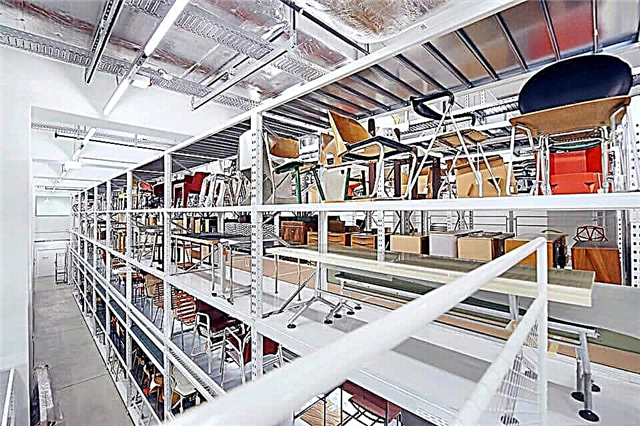
A separate museum is dedicated to the design industry. It is the oldest institution of its kind in the world. The exhibition of design items became a separate exhibition in 1875.
The museum funds include over 300 thousand items. The collection is divided into 4 parts: posters, graphics, works of arts and crafts, design products.
The museum regularly publishes a newsletter informing about the latest in the field of design. There is a store at the store where branded items are on sale. The institution accepts visitors on any day, except Monday.
Beyer Watch Museum

At 31 Bahnhofstrasse, there is not only the store of the world famous Beyer Chronometri company, but also a unique clock museum. Beyer watchmakers have been in the family business since the 18th century. Their chronometers have long become the standard of quality and earned the title of a cult accessory.
The collection, assembled by the owners of the company, includes over 500 rare exhibits. They can be used to trace the evolution of watch movements.
The oldest chronometer dates back to 1400 BC. On public display in showcases there are sundial, water, oil, quartz clocks.Tourists are surprised by the atomic chronometer, which strikes with the accuracy of time to one millionth of a second. A separate section is dedicated to the watches of famous people. Among them is a copy of the first conqueror of Everest - E. Hillary.
Also in the museum are nautical navigation devices, with the help of which mariners determined their location. In addition to the permanent exhibition, traveling exhibitions are organized in the hall. Antique lovers can purchase antique watches at Clock & Watch Beyer.
FIFA Museum

At the initiative of the former President of the International Federation of Football Associations (FIFA) J. Blanter, a special museum was organized in 2016. It is dedicated to the history of the most popular game. 140 million Swiss francs were spent on the construction of the 8-storey building. The collection of the museum includes St. 1 thousand exhibits, 500 videos, about 1, 5 thousand photographs, 4 thousand printed documents.
The materials displayed in the halls cover the history of football tournaments. Interactive technologies allow visitors to immerse themselves in the atmosphere of matches, to feel like a commentator, referee or football player. Tourists have the opportunity to play on stimulants, try on the uniform of their favorite team, take pictures with a prize cup. The premises of the museum building houses an exhibition hall, a library, a sports bar, a cafe, and a souvenir shop. The exposition is open to the public every day (except Monday).
Town hall

For a meeting of city government bodies in the 90s. 17th century the building of the town hall was erected. The hull has been perfectly preserved to this day. Its exterior and interior design clearly show the characteristic features of the Baroque style. The stone 3-storey building is decorated with reliefs and arcades. The vaults of the premises are painted in golden-red tones. Massive crystal and forged chandeliers were used to illuminate the halls.
Wooden doors are decorated with carvings. The meeting room is equipped with an antique ceramic oven. Since 1978, the town hall has been turned into an architectural monument. It is used for holding meetings of the cantonal council. The building is accessible for tourists.
Mount Whitleyberg

The maximum pleasure for tourists will be a visit to Mount Whitliberg (height 871 m). You can climb it in different ways: on foot, by bike or in a railway trailer. In addition, a cable car line to the town of Adliswil has been installed from a hill. The slopes of the mountain have been turned into a park, where the alleys smoothly turn into stairs. The path leading from the foot to the top is a model of the solar system (1 m = 1 million km). The platform at the top symbolizes the Sun.
In the warm season, a paragliding center operates on Whitleyberg. Anyone can rent a paraglider and fly over the city on it. In winter, the slopes of the mountain turn into a toboggan run. The length of the descent is 3 km. Whitleyberg offers stunning views of the city and its surroundings any time of the year.
Lindenhof lookout point

On the top of a hill in the city center is Lindhof (Linden yard). The square got its name due to the abundance of linden trees. Not only residents, but also visitors like to visit the "green zone". The site offers an excellent view of the old part of the city and the Limmat River. The main decoration of Lindenhof is a fountain with the figure of a warrior girl.
The sculpture depicts an episode from the history of the settlement. During the siege of the city in the 16th century, the brave residents donned military equipment and joined the ranks of the defenders along with the men. The large army frightened the enemy, and he lifted the siege. Another interesting object at the top of Lindenhof is the building where the Masonic lodge meetings took place.
Train Station

The modern gateway to the city is the Hauptbahnhof train station. It is the largest transport hub in the Alpine state. The daily throughput is approx. 3 thousand trains. The station accepts international trains coming from Austria, Germany, the Netherlands, Italy and other countries. In addition, there is a line connecting the railway station with the airport. The ride takes 10 minutes.
Guests of the city find themselves in a 2-storey building in the neoclassical style. Its exterior is decorated with columns and sculptures. The upper floor is occupied by the International Passenger Lounge. The lower floor is for trips to the suburbs. There are cafeterias, shops, and an information center at the station. On the site at the central entrance to the building, a monument to the founder of the railways in Switzerland A. Escher is erected. The famous Bahnhofstrasse street starts from the station.
Old botanical garden

One of the best recreational areas in the city is the Old Botanical Garden. It operates at the local university. The predecessor of the modern park area was the "herb garden", laid out in the 16th century by K. Gesner. The idea of the ancestor was supported by I. Gesner, a famous physician and naturalist. On his initiative in the middle of the 18th century. the current botanical garden was destroyed. In the 19th century, the territory underwent a reorganization. The arrangement of the "green zone" was carried out by the university gardener L. Frobel.
For thermophilic exotic cultures, the Palm Pavilion was built (1877). Now it has been turned into a concert venue where theatrical performances and musical performances are held. An ethnological museum, an arboretum, a pharmaceutical garden with medicinal plants are open for visiting. The territory has a zonal structure. Each site represents the flora of a specific natural area.
Chinese garden

Strong friendly relations between the Swiss Zurich and the Chinese city of Kunming were established at the end of the last century. Craftsmen from Europe helped the Chinese in solving the problem of water supply. Grateful inhabitants of the Celestial Empire offered to arrange a garden in the traditional oriental style on the territory of Zurich.
The site in the west of the lakeside embankment in 1993 turned into the Hinagarten - Chinese Garden. It is open to the public during the warmer months (March - October). Chinese gardeners have chosen bamboo, pine and Japanese mumé plum as the main plants. The trees have adapted well to the cold climate of the Alpine region. For their frost resistance, the plants were dubbed "the three friends of winter."
The park area is a harmonious combination of the main elements - earth, water, air. The central position is occupied by an artificial reservoir with a stone bridge. On the island in the middle of the pond, a gazebo was erected for solitude with nature. The Hinagarten is decorated with a pagoda-like house with a curved roof.
Sprungli Confectionery

Those with a sweet tooth must include the famous Sprungli confectionery on Bankofstrasse in their tourist itinerary. The establishment producing sweets was established in 1836. During its existence, it has gained recognition among gourmets and gained unprecedented popularity. The secret of Sprungli's success lies in the highest quality confectionery. All of them are made from natural ingredients, following the techniques of old technology.
The Luxemburgherli cake is in the greatest demand. The filling has a wide range of flavors: nutty, chocolate, vanilla, coffee, lemon, strawberry, amaretto, etc. There are showcases in the building on the 1st floor where sweets are put up for sale. The second floor is reserved for a cafe. Here visitors can taste popular Swiss delicacies.
Zurichhorn park

According to unofficial estimates, this unique place is visited by 3 million people annually. It is difficult to surprise Europe with picturesque parks, but Zurichhorn is distinguished by a special atmosphere of luxury, tranquility, and respectability. "The present century and the past century" are closely intertwined in it. From the side of the park, there is a stunning view of the mountains and the lake.
Its famous landmark - the futuristic sculpture "Eureka" - periodically begins to move and resembles either a time machine, or a cyborg, or an envoy of extraterrestrial civilizations. In the evenings, the largest open-air cinema in Switzerland is open in the park. Those who are keen on oriental culture in Zurichhorn will find a Chinese-style garden, whose galleries, pavilions, exotic plants evoke thoughts of distant wanderings.
Among the famous architectural masterpieces of the park: the palace on the water and the Le Corbusier Center, named after the famous French architect, who is the author of the building project. A striking avant-garde object made of glass, concrete, enamelled panels, it has a very interesting element: a floating steel roof. The house houses the private museum of the famous Swiss designer Heidi Weber, dedicated to the work of Le Corbusier.
Wasserkirche

The name of the Protestant temple in the historical center of the city literally means “church on the water”. Initially, the building was located on a river island, which mystics call a place of power. Previously, pagan gods were worshiped here. On the same island, Christian martyrs were killed: Felix and Regula - the heavenly patrons of the city.
The brother and sister, according to the legend, were beheaded, and they took their heads, made a prayer on the mountain where the Grossmünster temple (Grosmünster) is today, and departed to another world. Before Wasserkirche, there were other Christian structures on the island, including a Romanesque church. The history of the temple dates back to the X century, but a number of historians consider the time of its construction to be the XIII century. The building underwent a large-scale reconstruction in the 15th century.
As a result, the interior and exterior of the temple began to correspond to the canons of the late Gothic. At the same time, a healing spring was discovered on the island, but after several centuries it ceased to exist due to construction work. The church and the building attached to it (Helmhaus) have been reconstructed several times, which affected the peculiarities of the layout of the buildings. Divine services are held in the church today, and in Helmhaus there is an art gallery of the same name of works by contemporary Swiss artists.
Cabaret Voltaire

Conservative Switzerland has always attracted revolutionaries, rebels, extraordinary personalities. This cafe has become a legend for creative people and historians. The first cabarets associate Voltaire with Dadaism, an avant-garde movement in art that existed independently for less than 20 years, becoming part of Expressionism and Surrealism.
The second - with V.I. Lenin: the leader of the world proletariat loved to drop in here to play chess. Among the townspeople, cabaret was famous exclusively as a hot spot. At various times, one could see here Amedeo Modigliani, Pablo Picasso, Filippo Marinetti, Tristan Tzar, Marcel Janko, whose shocking behavior caused the audience a deep shock.
The regulars of the tavern could not imagine that meaningless drawings, sculptures of strange personalities years later would cost millions at Sotheby's. Nowadays, the institution has acquired a touch of special romance, nostalgia for the old days and respectability. A library is open here, one of the most expensive bars in the city operates, exhibitions, presentations, and art master classes are regularly held.
Tram Museum

Similar museums operate in different states. Locals consider this collection to be the most original in the world, because it contains unique pieces of equipment. Trams in the new millennium remain the leading public transport in the city: they carry over 60% of passengers. The Tram Museum was opened in 1967, the former tram depot became the location of its permanent exhibition. Its oldest rarities are over 120 years old.
Almost all the cars belonging to the tram museum are in good condition. The old technique regularly appears on city streets. It serves as exhibits and means of transportation for adults and children excursion groups. The museum has a souvenir shop where you can buy books, postcards, tram models.
Bread museum

Bread museums in different parts of the world seem to be competing with each other in terms of the uniqueness of their collections. The exposition located in the building of an old industrial mill is another confirmation of this. Outwardly, the building resembles a luxurious royal palace. It was erected at the end of the 19th century on the model of buildings intended for monarchs. After milling, a brewery worked here for 70 years. Officially, a museum dedicated to bread and milling was opened in the 80s of the last century. The private collection that it started with appeared 40 years earlier.
The main rarity: a working old mill. Visitors can watch her work, become participants in master classes on baking bread. There are restaurants in the building, whose menu includes pastries made from the same ground flour. The assortment of shops on the territory of the former mill has everything for gourmets and housewives: from jam, toys, kitchen utensils to rare cookbooks and handmade textiles.
Mount Uetliberg

The height of a popular city landmark: over 800 meters. Tram and railway tracks lead to it. Those who like leisurely walks prefer to get to the top on foot along the road between the trees. Alternatively, you can call a taxi, but in Switzerland it is quite expensive, even by local standards, pleasure. At the top there is not only an observation tower (admission is free) - a popular meeting place for lovers.
Uetliberg attracts gourmets, fans of Swiss cuisine. At the top there is a hotel-restaurant where dishes are prepared according to old recipes. For those who prefer to relax in the bosom of nature, there are special picnic areas on the mountain, however, making open fires on the territory is prohibited. In winter, a toboggan run, which is widely known among outdoor enthusiasts, functions almost around the clock.



